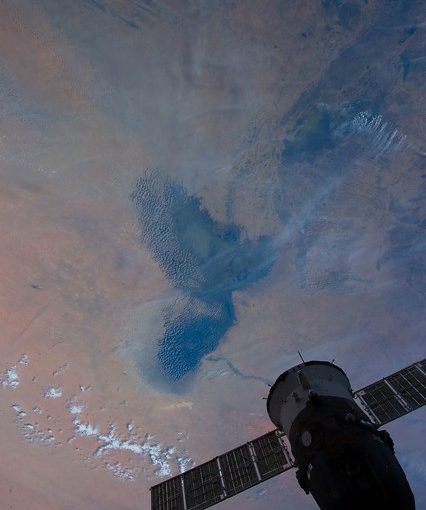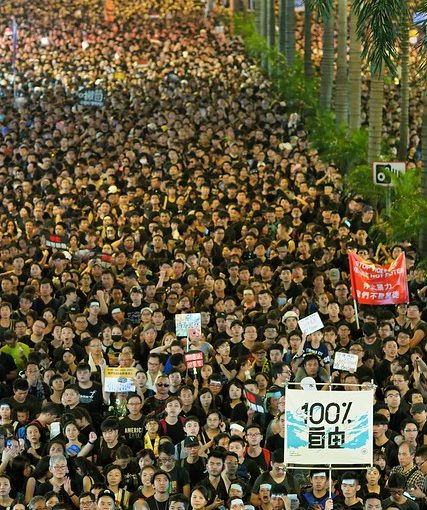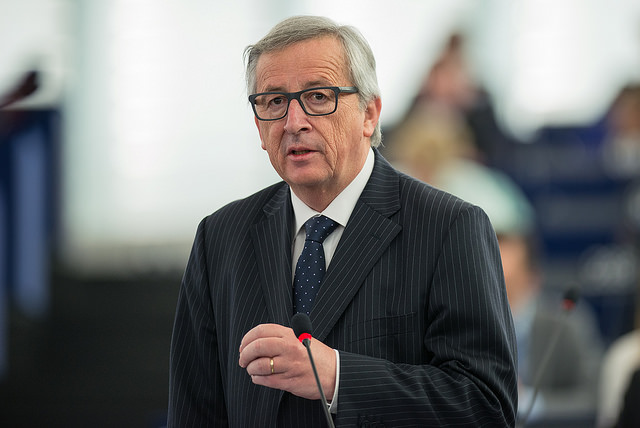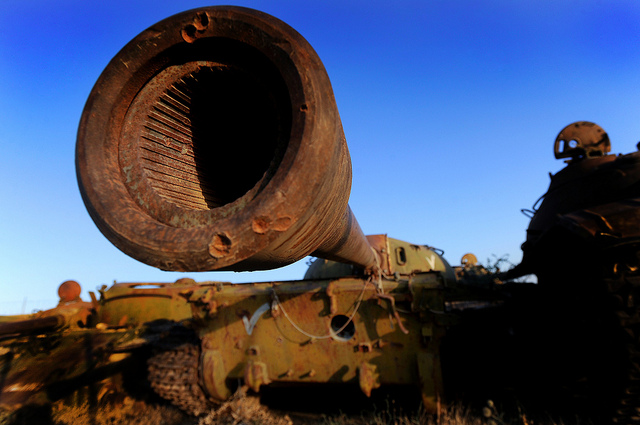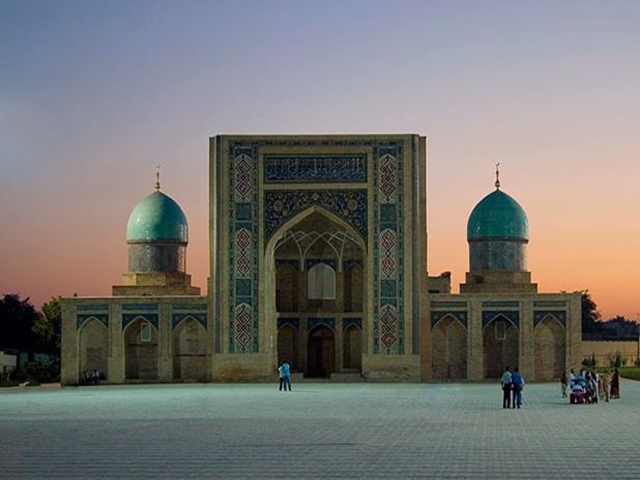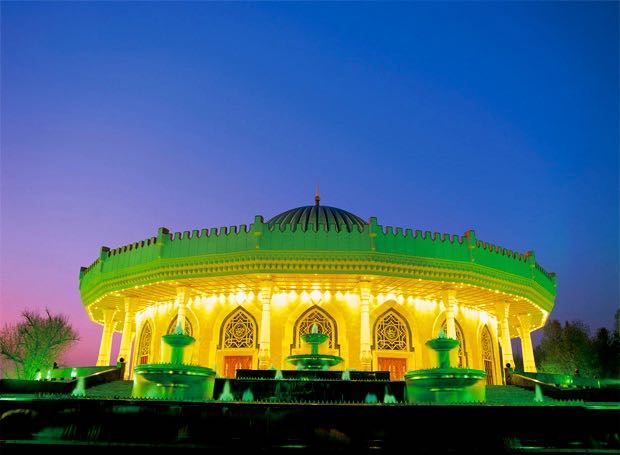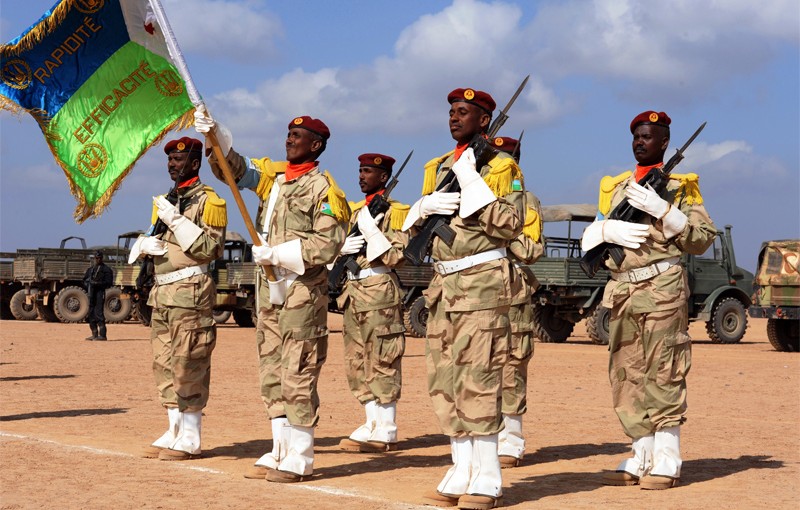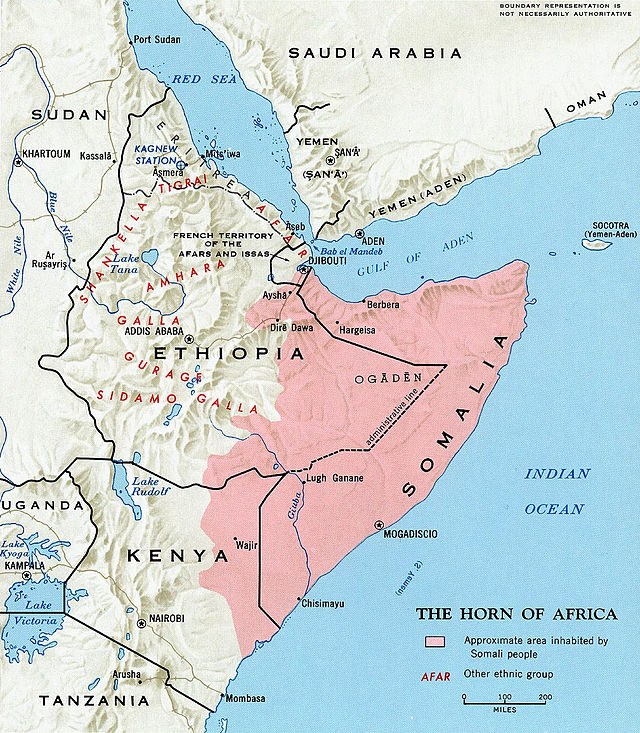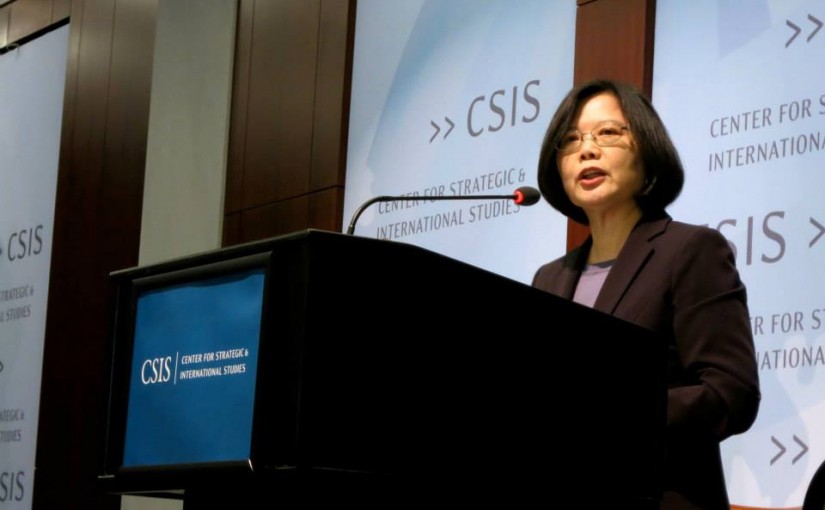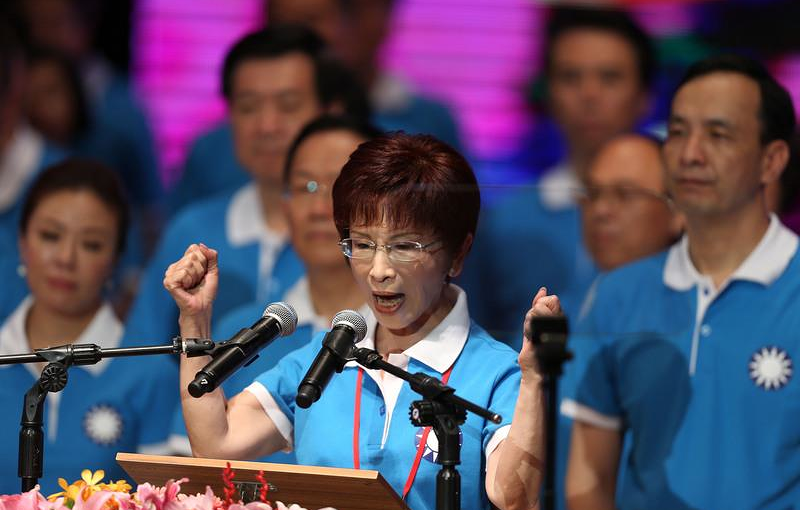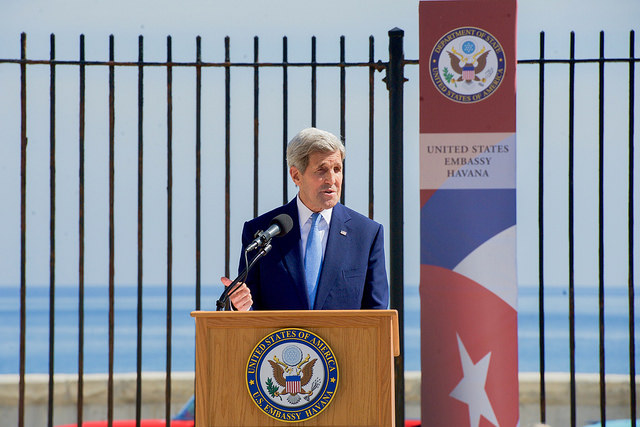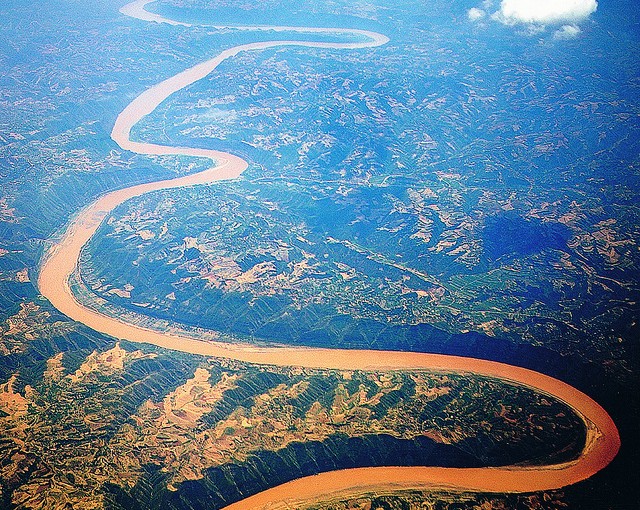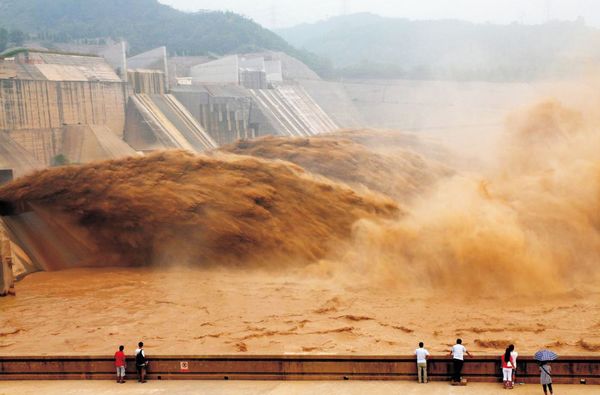by David Parmer
The following are remarks made by U.S. Secretary of State John Kerry on August 14, 2015 in Havana, Cuba on the occasion of the re-opening of the U.S. Embassy after 54 years. (Text: U.S. Dept. of State)
SECRETARY KERRY: Please be seated, everybody. Thank you very, very much. Muchas gracias. Buenos dias. I’m so sorry that we are a little bit late today, but what a beautiful ride in and how wonderful to be here. And I thank you for leaving my future transportation out here in back of me. I love it. (Laughter.)
Distinguished members of the Cuban delegation – Josefina, thank you for your leadership and for all your work of your delegation; excellencies from the diplomatic corps; my colleagues from Washington, past and present; Ambassador DeLaurentis and all of the embassy staff; and friends watching around the world, thank you for joining us at this truly historic moment as we prepare to raise the United States flag here at our embassy in Havana, symbolizing the re-establishment of diplomatic relations after 54 years. This is also the first time that a United States Secretary of State has been to Cuba since 1945. (Applause.)
This morning I feel very much at home here, and I’m grateful to those who have come to share in this ceremony who are standing around outside of our facilities, and I feel at home here because this is truly a memorable occasion – a day for pushing aside old barriers and exploring new possibilities.
And it is in that spirit that I say on behalf of my country, Los Estados Unidos acogen con beneplacito este nuevo comienzo de su relacion con el pueblo y el Gobierno de Cuba. Sabemos que el camino hacia unas relaciones plenamente normales es largo, pero es precisamente por ello que tenemos que empezar en este mismo instante. No hay nada que temer, ya que seran muchos los beneficios de los que gozaremos cuando permitamos a nuestros ciudadanos conocerse mejor, visitarse con mas frecuencia, realizar negocios de forma habitual, intercambiar ideas y aprender los unos de los otros.
My friends, we are gathered here today because our leaders – President Obama and President Castro – made a courageous decision to stop being the prisoners of history and to focus on the opportunities of today and tomorrow. This doesn’t mean that we should or will forget the past; how could we, after all? At least for my generation, the images are indelible.
In 1959, Fidel Castro came to the United States and was greeted by enthusiastic crowds. Returning the next year for the UN General Assembly, he was embraced by then-Soviet Premier Nikita Khrushchev. In 1961, the Bay of Pigs tragedy unfolded with President Kennedy accepting responsibility. And in October 1962, the missile crisis arose – 13 days that pushed us to the very threshold of nuclear war. I was a student then, and I can still remember the taut faces of our leaders, the grim map showing the movement of opposing ships, the approaching deadline, and that peculiar word – quarantine. We were unsettled and uncertain about the future because we didn’t know when closing our eyes at night what we would find when we woke up.
In that frozen environment, diplomatic ties between Washington and this capital city were strained, then stretched thin, then severed. In late 1960, the U.S. ambassador left Havana. Early the following January, Cuba demanded a big cut in the size of our diplomatic mission, and President Eisenhower then decided he had no choice but to shut the embassy down.
Most of the U.S. staff departed quickly, but a few stayed behind to hand the keys over to our Swiss colleagues, who would serve diligently and honorably as our protecting power for more than 50 years. I just met with the Foreign Minister Didier Burkhalter, and we’re grateful to Switzerland always for their service and their help. (Applause.)
Among those remaining at the embassy were three Marine guards: Larry Morris, Mike East, and Jim Tracy. As they stepped outside, they were confronted by a large crowd standing between them and the flagpole. Tensions were high. No one felt safe. But the Marines had a mission to accomplish. And slowly, the crowd just parted in front of them as they made their way to the flagpole, lowered Old Glory, folded it, and returned to the building.
Larry, Mike, and Jim had done their jobs, but they also made a bold promise that one day they would return to Havana and raise the flag again. (Applause.)
At the time, no one could have imagined how distant that day would be.
For more than half a century, U.S.-Cuban relations have been suspended in the amber of Cold War politics. In the interim, a whole generation of Americans and Cubans have grown up and grown old. The United States has had ten new presidents. In a united Germany, the Berlin Wall is a fading memory. Freed from Soviet shackles, Central Europe is again home to thriving democracies.
And last week, I was in Hanoi to mark the 20th anniversary of normalization of relations between the United States and Vietnam. Think about that. A long and terrible war that inflicted indelible scars on body and mind, followed by two decades of mutual healing, followed by another two decades of diplomatic and commercial engagement. In this period, Vietnam evolved from a country torn apart by violence into a dynamic society with one of the world’s fastest growing economies. And all that time, through reconciliation, through normalization, Cuban-American relations remained locked in the past.
Meanwhile, new technologies enabled people everywhere to benefit from shared projects across vast stretches of ocean and land. My friends, it doesn’t take a GPS to realize that the road of mutual isolation and estrangement that the United States and Cuba were traveling was not the right one and that the time has come for us to move in a more promising direction.
In the United States, that means recognizing that U.S. policy is not the anvil on which Cuba’s future will be forged. Decades of good intentions aside, the policies of the past have not led to a democratic transition in Cuba. It would be equally unrealistic to expect normalizing relations to have, in a short term, a transformational impact. After all, Cuba’s future is for Cubans to shape. Responsibility for the nature and quality of governance and accountability rests, as it should, not with any outside entity; but solely within the citizens of this country.
But the leaders in Havana – and the Cuban people – should also know that the United States will always remain a champion of democratic principles and reforms. Like many other governments in and outside this hemisphere, we will continue to urge the Cuban Government to fulfill its obligations under the UN and inter-American human rights covenants – obligations shared by the United States and every other country in the Americas.
And indeed, we remain convinced the people of Cuba would be best served by genuine democracy, where people are free to choose their leaders, express their ideas, practice their faith; where the commitment to economic and social justice is realized more fully; where institutions are answerable to those they serve; and where civil society is independent and allowed to flourish.
Let me be clear: The establishment of normal diplomatic relations is not something that one government does as a favor to another; it is something that two countries do together when the citizens of both will benefit. And in this case, the reopening of our embassies is important on two levels: People-to-people and government-to-government.
First, we believe it’s helpful for the people of our nations to learn more about each other, to meet each other. That is why we are encouraged that travel from the United States to Cuba has already increased by 35 percent since January and is continuing to go up. We are encouraged that more and more U.S. companies are exploring commercial ventures here that would create opportunities for Cuba’s own rising number of entrepreneurs, and we are encouraged that U.S. firms are interested in helping Cuba expand its telecommunications and internet links, and that the government here recently pledged to create dozens of new and more affordable Wi-Fi hotspots.
We also want to acknowledge the special role that the Cuban American community is playing in establishing a new relationship between our countries. And in fact, we have with us this morning representatives from that community, some of whom were born here and others who were born in the United States. With their strong ties of culture and family, they can contribute much to the spirit of bilateral cooperation and progress that we are seeking to create, just as they have contributed much to their communities in their adopted land.
The restoration of diplomatic ties will also make it easier for our governments to engage. After all, we are neighbors, and neighbors will always have much to discuss in such areas as civil aviation, migration policy, disaster preparedness, protecting marine environment, global climate change, and other tougher and more complicated issues. Having normal relations makes it easier for us to talk, and talk can deepen understanding even when we know full well we will not see eye to eye on everything.
We are all aware that notwithstanding President Obama’s new policy, the overall U.S. embargo on trade with Cuba remains in place and can only be lifted by congressional action – a step that we strongly favor. For now – (applause). For now, the President has taken steps to ease restrictions on remittances, on exports and imports to help Cuban private entrepreneurs, on telecommunications, on family travel, but we want to go further. The goal of all of these changes is to help Cubans connect to the world and to improve their lives. And just as we are doing our part, we urge the Cuban Government to make it less difficult for their citizens to start businesses, to engage in trade, access information online. The embargo has always been something of a two-way street – both sides need to remove restrictions that have been holding Cubans back.
Before closing, I want to sincerely thank leaders throughout the Americas who have long urged the United States and Cuba to restore normal ties. I thank the Holy Father Pope Francis and the Vatican for supporting the start of a new chapter in relations between our countries. And I think it is not accidental that the Holy Father will come here and then to Washington, the United States at this moment. I applaud President Obama and President Castro both for having the courage to bring us together in the face of considerable opposition. I am grateful to Assistant Secretary of State Roberta Jacobson and her team, to our counterparts in the Cuban Foreign Ministry, to our chief of mission, Ambassador Jeff DeLaurentis and his extraordinary staff, for all of the hard work that has led up to this day. And I just say to our wonderful embassy staff, if you think you’ve been busy these past months, hold on to your seatbelts. (Laughter.)
But above all, above all, I want to pay tribute to the people of Cuba and to the Cuban American community in the United States. Jose Marti once said that “everything that divides men…is a sin against humanity.” Clearly, the events of the past – the harsh words, the provocative and retaliatory actions, the human tragedies – all have been a source of deep division that has diminished our common humanity. There have been too many days of sacrifice and sorrow; too many decades of suspicion and fear. That is why I am heartened by the many on both sides of the Straits who – whether because of family ties or a simple desire to replace anger with something more productive – have endorsed this search for a better path.
We have begun to move down that path without any illusions about how difficult it may be. But we are each confident in our intentions, confident in the contacts that we have made, and pleased with the friendships that we have begun to forge.
And we are certain that the time is now to reach out to one another, as two peoples who are no longer enemies or rivals, but neighbors – time to unfurl our flags, raise them up, and let the world know that we wish each other well.
Estamos seguros de que este es el momento de acercarnos: dos pueblos ya no enemigos ni rivales, sino vecinos. Es el momento de desplegar nuestras banderas, enarbolarlas y hacerle saber al resto del mundo que nos deseamos lo mejor los unos a los otros.
It is with that healing mission in mind that I turn now to Larry Morris, Jim Tracy, and Mike East. Fifty-four years ago, you gentlemen promised to return to Havana and hoist the flag over the United States Embassy that you lowered on that January day long ago. Today, I invite you on behalf of President Obama and the American people to fulfill that pledge by presenting the Stars and Stripes to be raised by members of our current military detachment.
Larry, Jim, and Mike, this is your cue to deliver on words that would make any diplomat proud, just as they would any member of the United States Marine Corps: Promise made, promise kept. Thank you.
(Photo: U.S. Dept.of State via flickr)
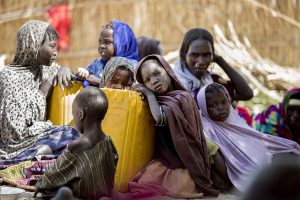
 日本語
日本語 English
English 中国語
中国語